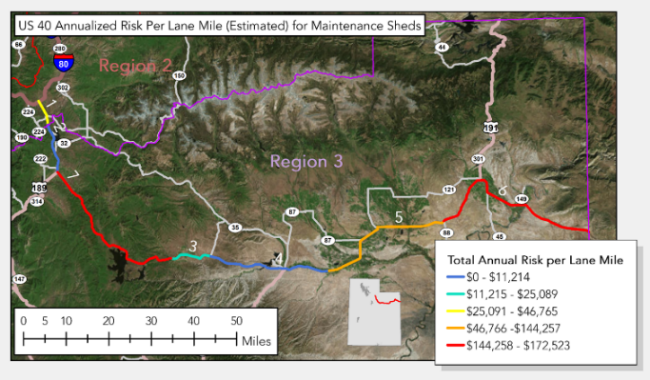Utah DOT (UDOT) sought to identify a framework and repeatable process to quantify the impact of physical threats to highway assets.
As part of their updated Transportation Asset Management Plan, the agency needed to address MAP-21 requirements for risk-based asset management and performance-based management for federal-aid eligible highways—but there was no available industry standard to use.
UDOT turned to AEM Transportation Services to develop a framework and demonstrate its value for the US 40 corridor. Through a 7-step assessment, adapted from AEM’s work with other western states on probability-based risk and resilience, AEM and UDOT determined the annual financial risk to highway assets for both UDOT and the traveling public from a range of physical threats.
With this data, AEM developed a new Level of Resilience (LOR) metric to measure the corridor resilience, capturing the annual risk and asset criticality along the corridor to overall system operations. The LOR allows for easy prioritization of assets to improve corridor resilience.
The project demonstrated an approach to normalize risk and resilience metrics to be used in a similar manner as more traditional metrics such as safety, operations, and mobility.











